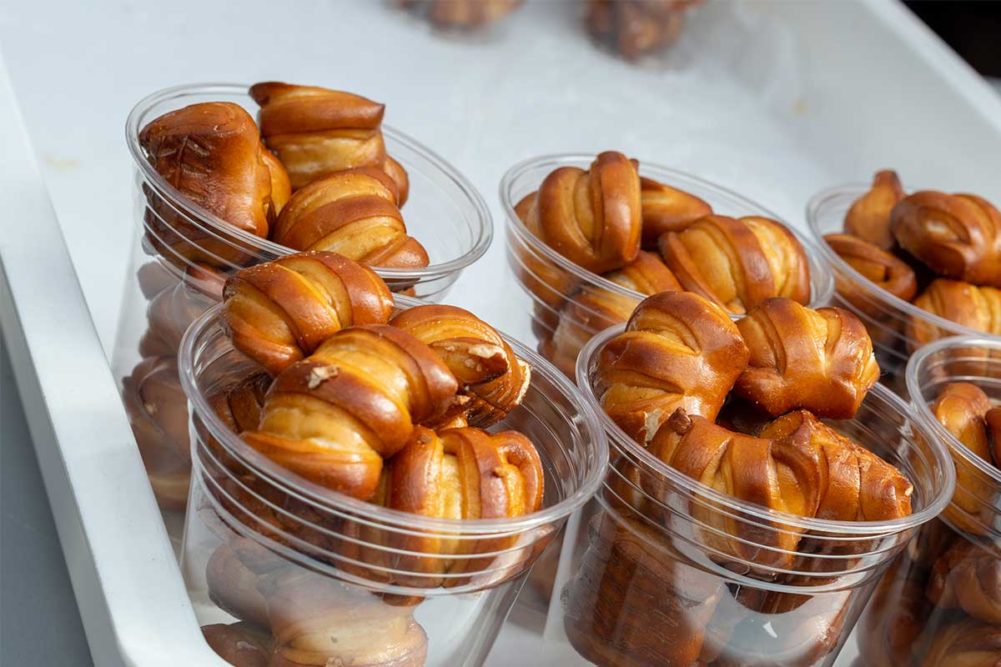Inclusions can play a role in new snack development as companies try to give consumers visible signs of nutrition through ingredients like nuts and seeds.
“Extruded healthy snacks usually mean more fiber and protein with less sugar, and these healthy snacks can be some of the harder materials that run through our extruders,” said John Giacoio, vice president, sales and marketing, Rheon USA. “Many times, it also means these snacks have large particulates, giving the final product more of a value-added appearance.”
Inclusions, however, pose some challenges to extrusion. They make doughs more difficult to process and need to remain intact to provide the payoff of visibility.
“We have been seeing products that are increasingly difficult to scale and form,” said John McIsaac, vice president of strategic business development, Reiser. “Products are stiff doughs with large inclusions, but our Vemag is typically able to handle them.”
To keep inclusions intact, extruders need to be gentle to move them through the process without damaging them.
“This is where Rheon co-extruders shine,” Mr. Giacoio said. “Not only are our co-extruders gentle in how we handle particulates, but we can also add a filling such as a nut butter.”
Fillings provide snack producers another opportunity to provide more nutritional value to consumers as well as position the products as premium.
“When manufacturers find out they can also add a filling, it turns out to be a game changer,” Mr. Giacoio said. “Being able to make a filled healthy snack allows manufacturers to separate materials, showing a clear filling instead of just mixing everything together. It eats and looks like a high-end product.”
If fillings are encased, however, in a BFY dough, Nico Roesler, North American pretzel and snack equipment sales manager, Reading Bakery Systems, said it’s critical that the dough jacket is formulated with the strength to seal the filling without cracks or leaks. Not only does this ensure the quality and integrity of the snack, but it also is a matter of safety.
“In formulating these products, the filling needs to be bake-stable, and that means modifying the oil content so the oil doesn’t leak out during baking,” he said. “Not only does this create inconsistent pieces, but it also creates a fire hazard as the oil can leak onto a hot oven belt and can be difficult to clean off.”
This article is an excerpt from the August 2023 issue of Baking & Snack. To read the entire feature on Snack Processing, click here.





